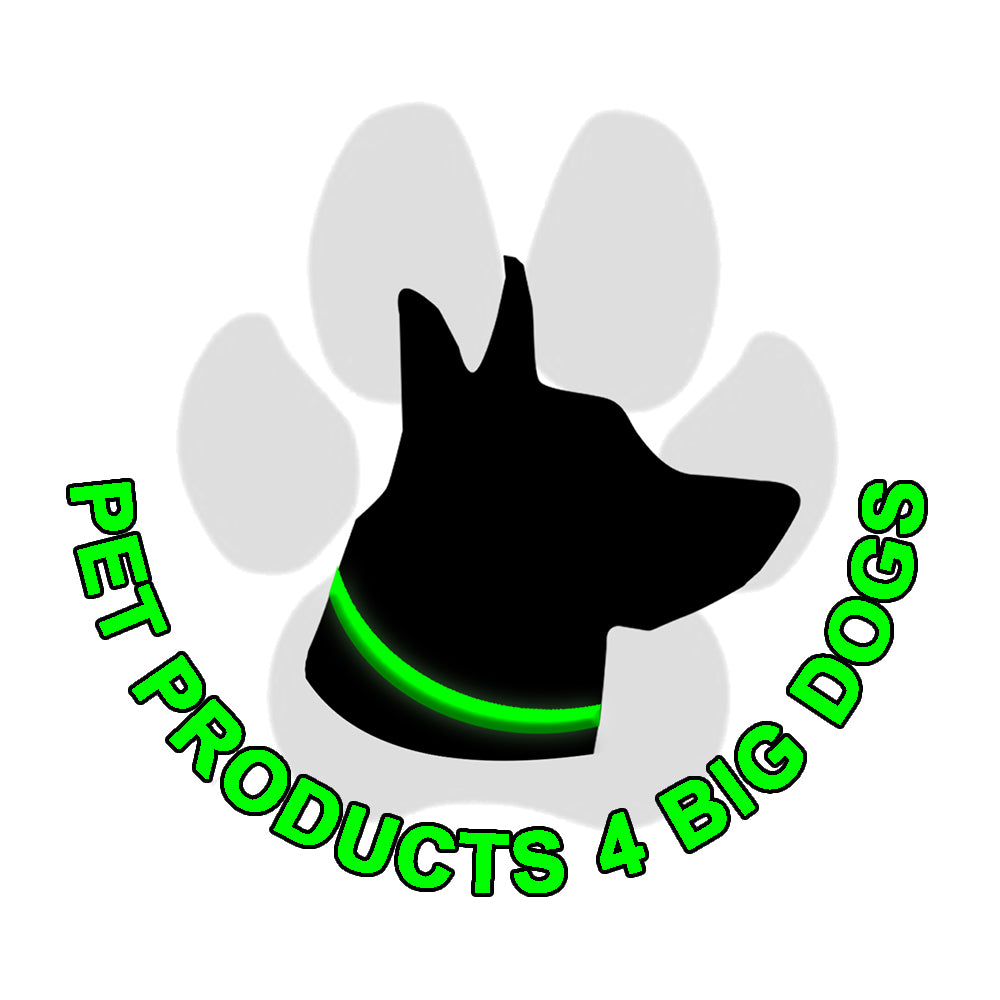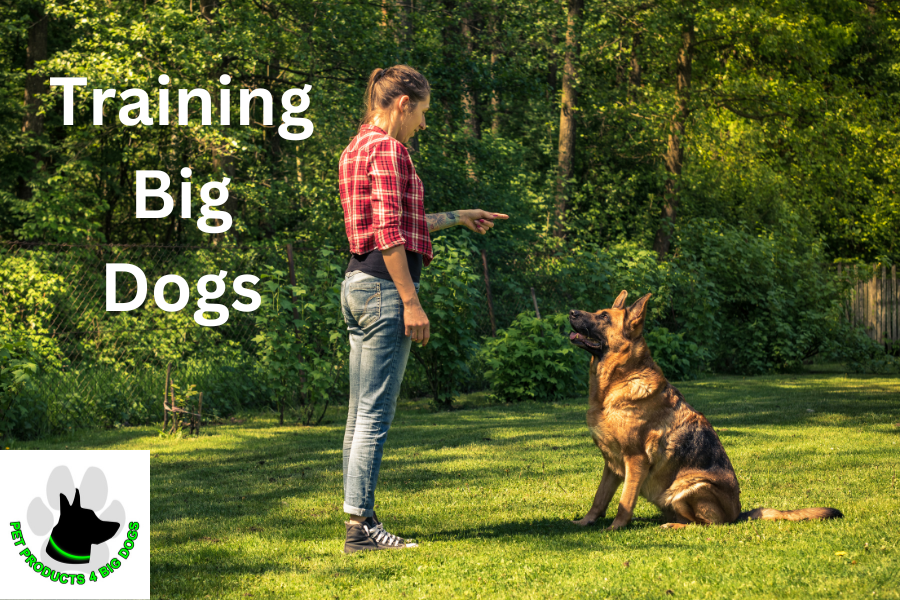Have you ever heard the phrase “big dogs need a heavy hand”, or “you need to be the boss” when training large breed dogs?
Skilled trainers and teachers apply sound scientific behaviour principles when training animals across all species including large dogs. This means you don’t need to use a ‘heavy hand’ and you don’t need to be the boss.
As Lili Chin’s 2012 infographic says, “If we can teach wild animals without force or punishment, then we can also train our best friends without force or punishment”.

All dogs need a human who will advocate for them, be responsible and be a friend. You don’t need to be your dog’s ‘boss’. Being bossy to big dogs doesn’t really work as you can’t really make big dogs do a lot. You can’t physically push, pull or put them into position. Try getting a large dog to drop by pushing on their back, or to sit by pushing on their rump. It’s pretty hard as candy not to mention uncomfortable for them.
We need to teach them it’s worthwhile to listen to you and to follow your cues. Animals want to know what’s in it for them, so we can teach them it’s worth their effort and they will get rewarded. If you want behaviour to be repeated, it needs to be reinforced with something that your dog likes and feels good for them.
Think outside the square for reinforcement of behaviours you like – dogs can be motivated by lots of different things. Of course, primary reinforcers (food for example), but also secondary reinforcers such as praise, pats and toys. Try several types of treats/food (squeeze food tubes are a hit!) and think about the way you deliver the treats. Sometimes rolling them along the ground for a dog to chase is more motivating than just hand feeding. Textures of treats can make a difference too. Soft, meaty treats are easier to eat than hard biscuit type treats. Even if you think your dog isn’t food motivated – they just aren’t yet until you find the right treat.
It’s all about relationship and trust. You want your dog to feel good when training with you, that they trust you aren’t going to force or make them do things, and that it’s also super fun to spend time training with you. Good relationships take time to develop, so be patient and kind.
You also want to set your dog up for success. Short training sessions are better than slugging it out for hours. Alternate between training skills and play, better yet, make training a game! Keep in mind that some big dogs can take longer to respond to cues than say a border collie. Think of a mastiff going into lay down position versus a ‘brain going a million miles an hour’ border collie. Keeping this in mind allows you to have patience when training big dogs.
The importance of training big dogs should not be underrated. Big dogs need to have exceptional manners so it’s crucial you train your big dog. If they put a foot wrong, unfortunately public perception is harsh – it’s the same behaviour if you have a small dog barking and lunging at the end of a lead, but big dogs can obviously be stronger and cause more ‘damage’. Have you ever seen a tiny dog snap at a person if the person goes to pat it? The owner may just pick the dog up and laugh it off or make an excuse for the dog being small. You can’t exactly do that with a big dog and most people won’t laugh it off.
Unfortunately, some people can be prejudiced against large dogs. For example, they may immediately cross the road when they see you coming, or even pick their small dog up to prevent interactions with your dog. 🙄 You also don’t want your 35kg dog jumping up on people, particularly the elderly or children. If a small dog does, it may be called ‘cute’ but if a big dog does it, they can cause an injury.
You need to be safe with big dogs. We use equipment in dog training to make it safe for our animals and ourselves and to allow more ‘control’ particularly in busy environments. You can’t pick a large dog up if they are scared or excited, so you need to be confident in your ability to hold and control your large dog.
Harnesses should be non-restrictive (H style), to allow ease of shoulder movement, sitting correctly on sternum and sitting back to allow freedom of elbow and shoulder movement and not cause chafing. Leash is a standard size and length, possibly leather, padded or grippy rubber for comfort for the human. Make sure your equipment has strong clips for leash attachment. Look for a weight rating or materials like stainless steel. You can also get lockable clips for safety.
Head collars allow more control and allow you to control the head which in turn controls the body. Head collars need to be conditioned in a positive way. We do not recommend using a head collar on its own without a harness and double ended lead as there is a risk of damage to the neck if the dog pulls suddenly and unexpectantly.
Teach any new skills in a low distracting environment (in home, backyard, front yard) first. Skills such as focus (eye contact), sit, find it and touch are an excellent start. We like to include ‘pattern games’ in our training for all dogs as they are easy and predictable for the dog which then helps the dog to focus and settle.
Allow sniffing! In any new training areas, allow time for your dog to get used to the sights and smells. Spend time walking around and let them follow their nose before you ask if they are ready to train by cueing a simple known behaviour such as target.
Then, the sky’s the limit with your big dog! They can be taught everything from basic manners to skillful tricks, even sports like flyball, agility and lure coursing. You will never know the champion your big dog can become if you don’t go out and give it a go.
This is a guest blog post -
 Anne Hardacre is a passionate and qualified dog trainer (CPDT-KA) and fear free certified professional with over 20 years experience in canine behaviour and dog sports and specialises in canine nutrition and wellbeing. Her unique holistic approach ensures lifelong physical, mental and emotional wellness for her client's pets. Visit https://www.pawsitiveconnection.com.au/.
Anne Hardacre is a passionate and qualified dog trainer (CPDT-KA) and fear free certified professional with over 20 years experience in canine behaviour and dog sports and specialises in canine nutrition and wellbeing. Her unique holistic approach ensures lifelong physical, mental and emotional wellness for her client's pets. Visit https://www.pawsitiveconnection.com.au/.

